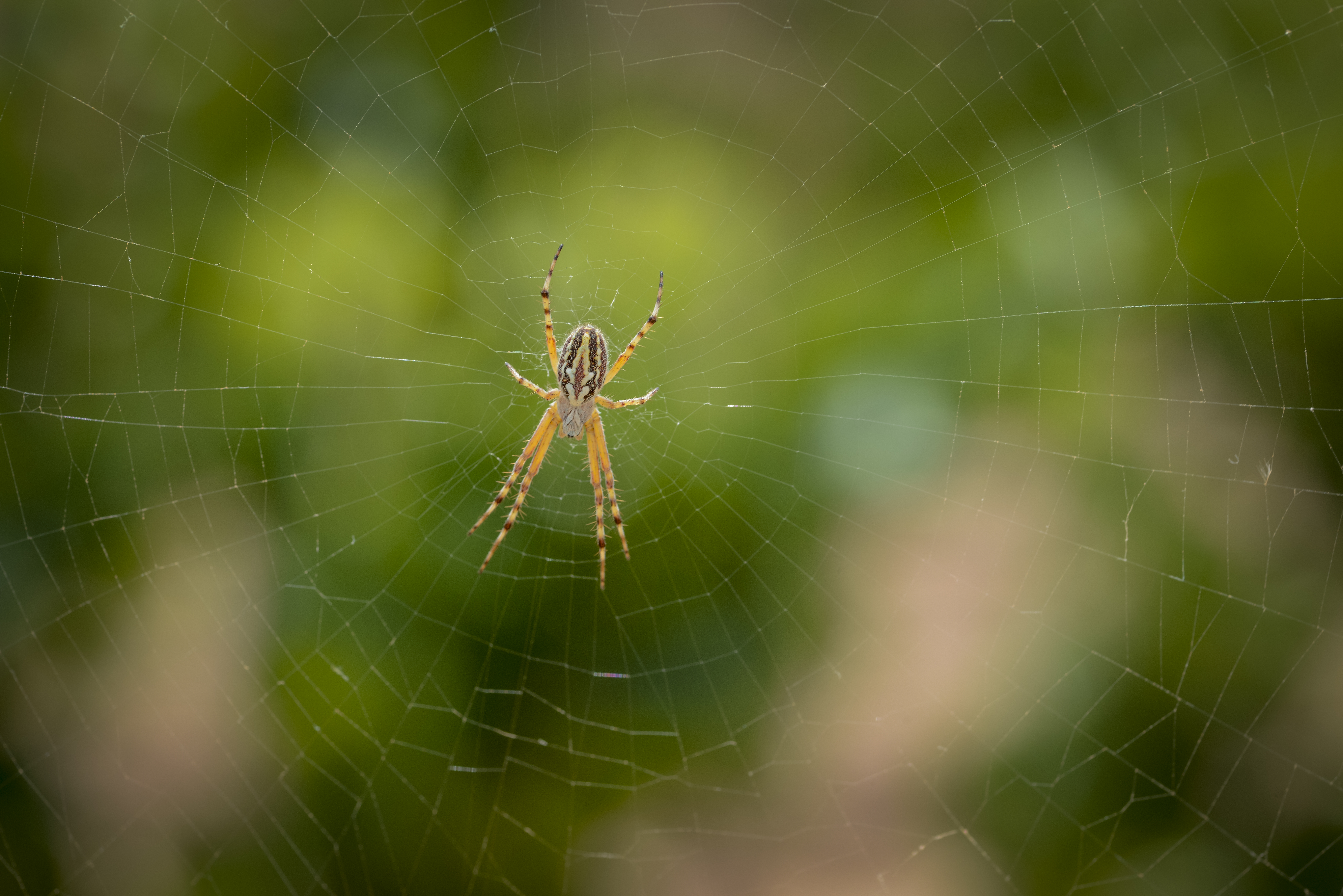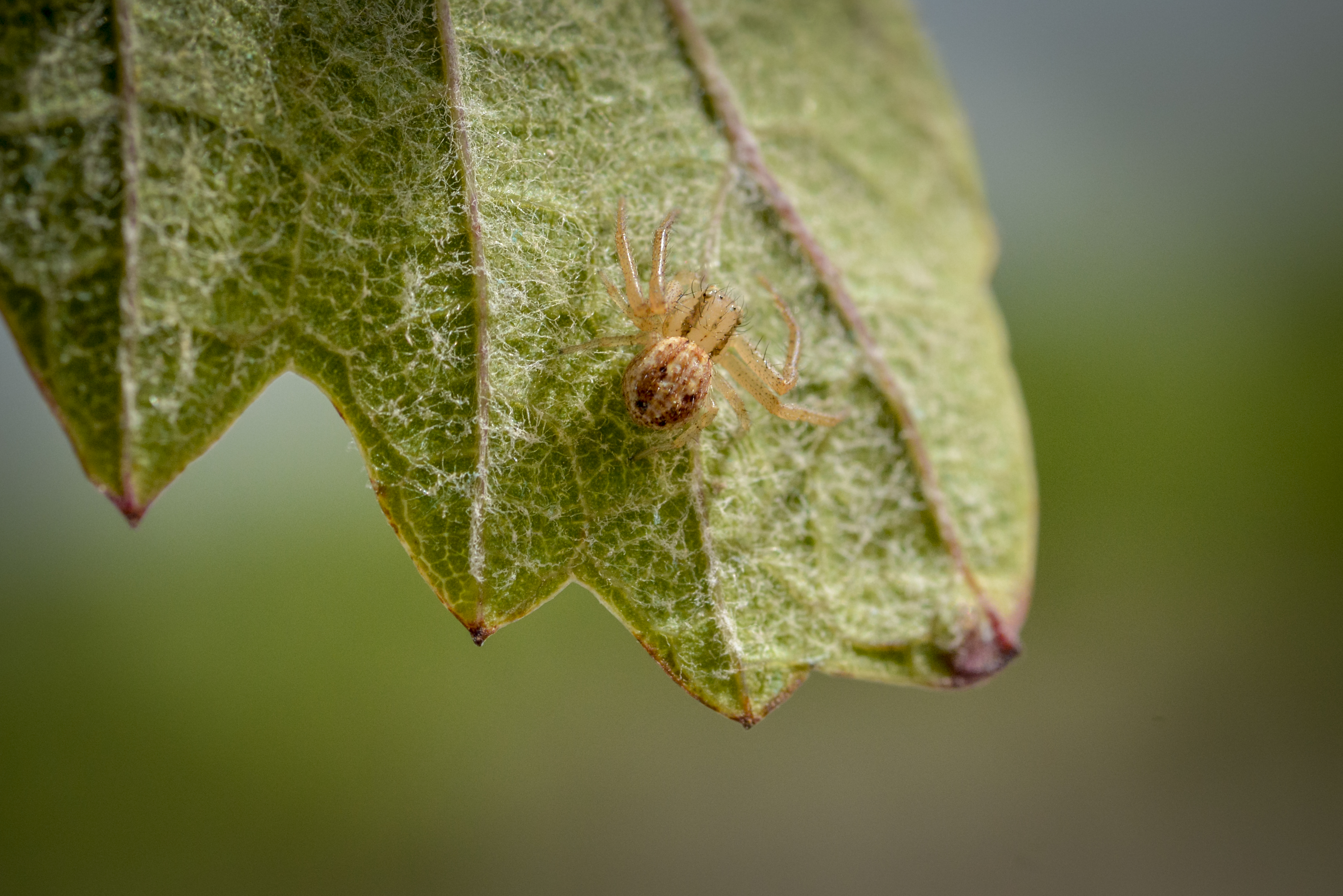Autumn, the Season of Spiderwebs

By Jose Luis Gallego, environmental communicator (@ecogallego)
Walking in the woods in October inevitably brings a “gossamer” encounter: those famous, fine, sticky strands that get caught on our bodies as we make our way past low branches and through bushes. Their origin resides in one of nature’s most abundant creatures: the spider.
When autumn sets in, these invertebrates take advantage of the wind blowing through the woods to float through the air on their silky threads, which they previously attach to a branch. This allows spiders, much like Tarzan swinging on a liana vine, to cover considerable distances in a single “flight”.

A spider resting on a vine leaf
Scientists call this method of travel “ballooning” and, depending on the species and wind conditions, it can take these fragile invertebrates from point A to point B without expending hardly any energy at all. Studies have shown that a sufficiently excited pin-stripe wolf spider (Pardosa monticola) can release almost half a kilometre of gossamer threads in one go. This explains why the forests feel so sticky this time of year.
Spiders produce gossamer with several proteins present in their organism, including glycine. In addition to producing their famous silky “lianas”, the protein is also essential to building their webs – those effective and sophisticated traps with which arachnids catch their prey.

Spider in a web at a Familia Torres vineyard
On autumnal mornings, spiderwebs are often sprinkled with pearl-like dew or frost, visually revealing their entire structure. As a result, experts can identify the specific species responsible for building this trap. Among the most spectacular is the orb web of the wasp spider (Argiope bruennichi), which can extend to a diameter of more than 30 centimetres and is easily identifiable by the characteristic zig-zag web decoration at the centre of the orb.
Contrary to what many people think, spiders are not insects. Comprising more than 50,000 species identified by scientists thus far, they comprise their own group: the arachnids. A surefire way of differentiating one from the other is by counting the number of legs: insects have six, spiders eight. Furthermore, the bodies of insects are clearly divided into three parts – head, thorax, abdomen – whereas, at first glance, those of spiders only consist of two, because the head and thorax are joined by the carapace.
Here are a few other clues to tell insects and spiders apart: no spider anywhere on this planet has antennae. Nor do they have wings. Their eyes are simple rather than compound. In contrast to the fly’s famous eyes – that technological marvel of nature which, when seen through a magnifying glass, are shocking to behold and bring to mind sci-fi movies – the spider has very simple, small black eyes that significantly reduce their ability to see. That said, some species of spiders compensate for this shortcoming by having more than a dozen eyes.
With respect to the myth that spiders are a potential threat to humans, it’s worth noting that, of all scientifically identified species, only about a dozen are poisonous enough to be truly dangerous to us and less than half of those are known to bite. Furthermore, none of them are found in Europe.

A spider on the back of a vine leaf
The only species living in our forests whose bite can produce a moderate to severe toxic reaction is the black widow (Latrodectus tredecimguttatus). This species – easily identifiable by its round, grape-shaped black abdomen with characteristic red spots – owes its infamous name to the female’s habit of eating the male after copulation: behaviour that is relatively common among arachnids. Cases of accidental black widow bites are rare, but should this occur, it is important to seek medical attention.
Spiders have an essential role in our ecosystem and are crucial biological pest-control specialists, making them agricultural allies. For all of these reasons, and despite the aversions they may provoke in certain people, these invertebrates deserve our full consideration and respect. Unfortunately, the rise of industrial agriculture and indiscriminate pesticide use have driven a large number of spider species to the brink of extinction. As a result, some of them are listed as legally protected species.
